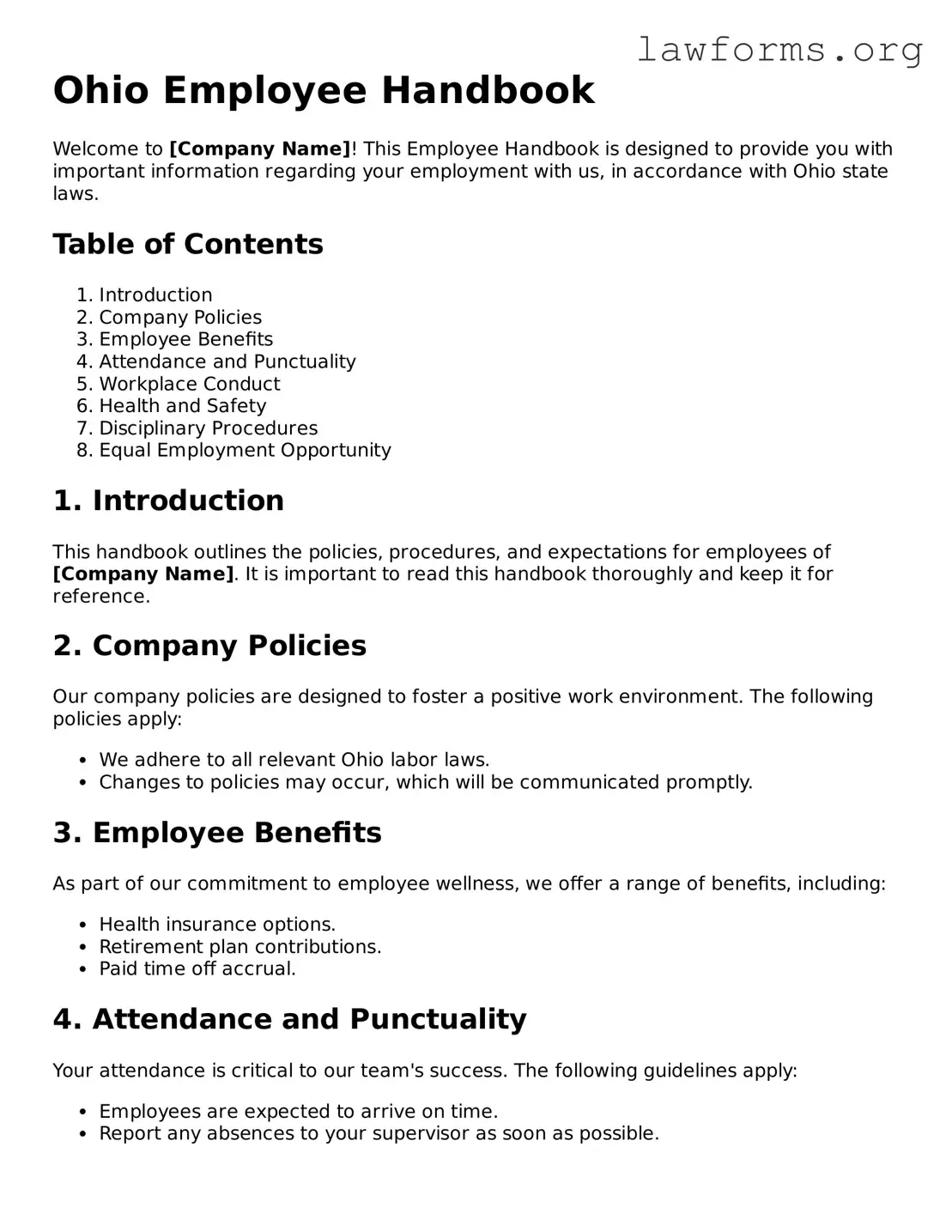Ohio Employee Handbook
Welcome to [Company Name]! This Employee Handbook is designed to provide you with important information regarding your employment with us, in accordance with Ohio state laws.
Table of Contents
- Introduction
- Company Policies
- Employee Benefits
- Attendance and Punctuality
- Workplace Conduct
- Health and Safety
- Disciplinary Procedures
- Equal Employment Opportunity
1. Introduction
This handbook outlines the policies, procedures, and expectations for employees of [Company Name]. It is important to read this handbook thoroughly and keep it for reference.
2. Company Policies
Our company policies are designed to foster a positive work environment. The following policies apply:
- We adhere to all relevant Ohio labor laws.
- Changes to policies may occur, which will be communicated promptly.
3. Employee Benefits
As part of our commitment to employee wellness, we offer a range of benefits, including:
- Health insurance options.
- Retirement plan contributions.
- Paid time off accrual.
4. Attendance and Punctuality
Your attendance is critical to our team's success. The following guidelines apply:
- Employees are expected to arrive on time.
- Report any absences to your supervisor as soon as possible.
5. Workplace Conduct
Professionalism is expected in all interactions. Please remember:
- Respect your colleagues and supervisors.
- Harassment of any kind will not be tolerated.
6. Health and Safety
Your safety is our priority. Follow these practices:
- Report any unsafe conditions to your supervisor.
- Participate in required health and safety training sessions.
7. Disciplinary Procedures
Adherence to company policies is crucial. Violations may result in disciplinary action, which could include:
- Verbal warnings.
- Written warnings.
- Termination of employment.
8. Equal Employment Opportunity
[Company Name] is committed to providing equal opportunity in employment. We do not discriminate based on:
- Race
- Color
- Religion
- Sex
- National origin
- Disability
- Age
For any questions regarding this handbook, please reach out to [Contact Information]. Your understanding of these policies is crucial for a successful career with us.
